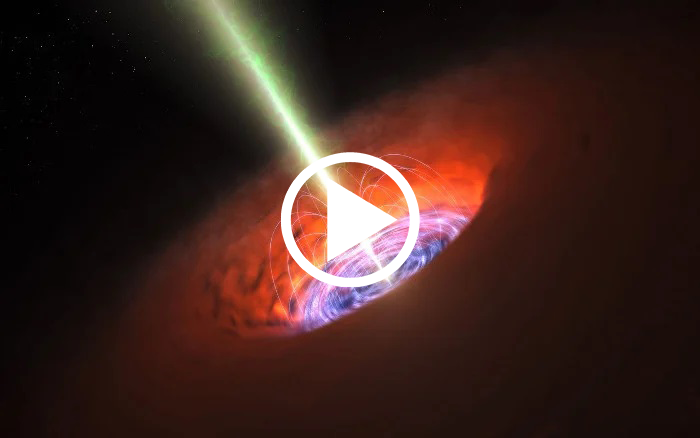The new hypothesis proposed by astrophysicist Stephen Hawking and his colleagues suggests that black holes can carry a hair made of “ghost” particles that do not carry energy.
According to a manuscript published on January 5 in the journal arXiv, part of the information absorbed by the black hole is stored in these “hairs”.
However, the research results cannot prove that all the information entering the black hole is preserved. “We cannot answer the question of whether all information inside a black hole is stored this way,” said physicist Andrew Strominger of Harvard University in the United States, one authors of the study.
According to Einstein’s general theory of relativity, a black hole is a cosmic object with an extremely dense volume density that is sufficient to distort space – time. The gravity of black holes is so strong that no light or matter escapes their attraction. According to the US Space Agency (NASA), primordial black holes formed immediately after the Big Bang with the size of an atom but as heavy as a mountain. Other black holes form when massive stars die and shrink, and supermassive black holes exist at the center of most galaxies.
In the 1960s, physicist John Wheeler and his colleagues once proposed the “hairless” “black hole hypothesis,” a metaphor for black holes without complex properties. As suggested by Wheeler, all black holes are the same except for the physical quantities of spin, momentum, and mass.
Then, in the 1970s, Stephen Hawking introduced a concept called “Hawking radiation”. In Hawking’s formula, all black holes lose mass through “ghost” quantum particles escaping from the black hole into space. Ultimately, the Hawking radiation causes the black hole to evaporate completely. The vacuum left after the black hole evaporates is unable to store information about the black hole.
Because Hawking’s radiation randomly escapes from the black hole, information inside the black hole disappears over time, and there is no way to know its origin. However, this creates a paradox. According to quantum theory, information that existed in the past should be fully recoverable. In recent years, Hawking has revisited the concept of information loss and argued that black holes store information.
Over the years, Strominger has drawn several important conclusions. Thanks to calculations, Strominger, as well as Hawking and Malcolm Perry, two physicists from the University of Cambridge, UK, discovered when adding a “soft” photon – a light particle without energy, the vacuum region after the black hole has ejected vapor has constant energy but the angular momentum will change. This means that the vacuum states of evaporating black holes are not the same. The specific properties of this vacuum depend on its origin and its history.
“It’s like a large capacity hard drive that can store an infinite amount of information in the form of photons and gravitons with no energy,” Strominger told Live Science. However, the information is very mixed.
According to Aidan Chatwin-Davies, a physicist at the California Institute of Technology, USA, the new research findings are not the definitive answer to the problem of finding information in black holes, but it is a step in the right direction. .


